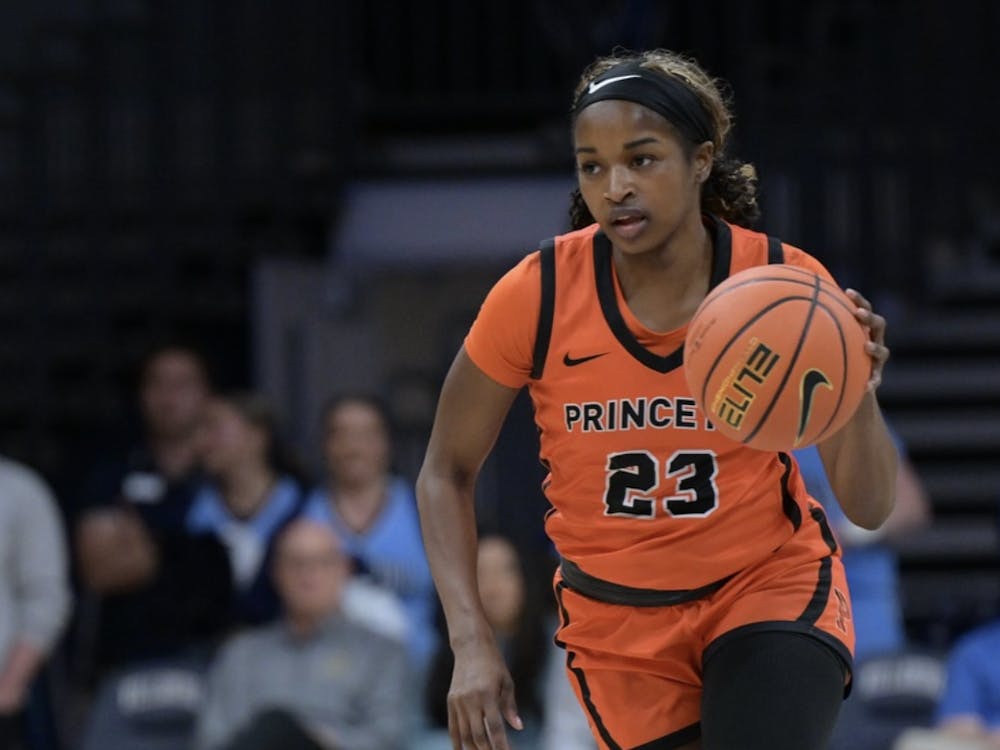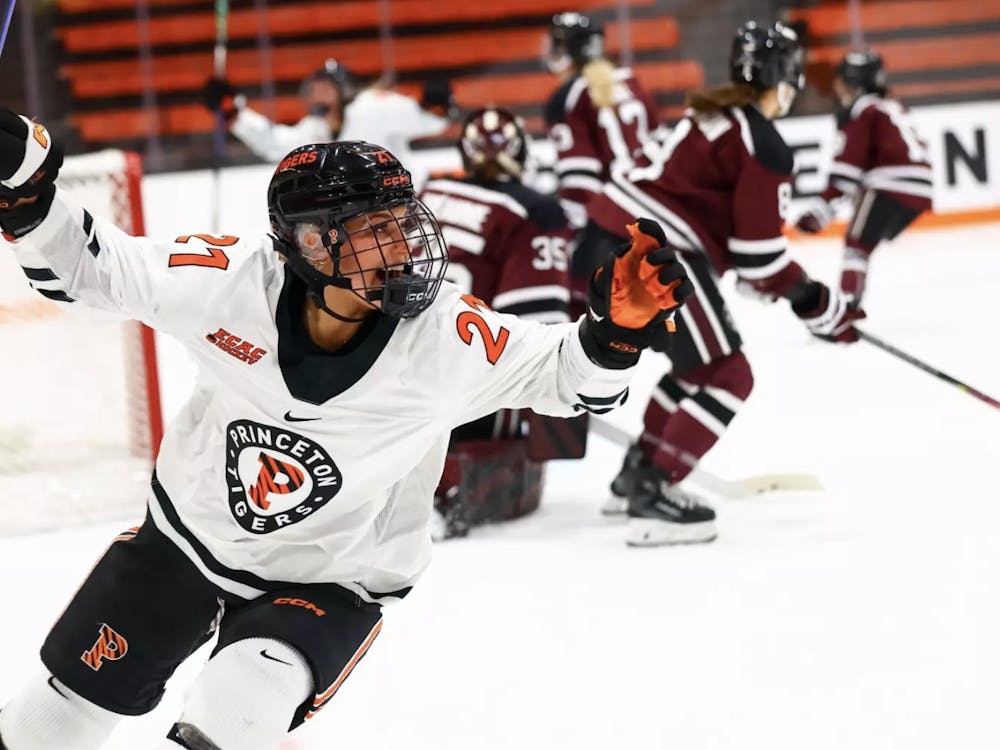The scariest thing about this year’s Crimson squad, however, is its defense. The Crimson keeps opposing teams away from the basket by racking up 4.7 blocks (6.1 in conference games) and 7.55 steals per game, both of which are — you guessed it — more league-leading numbers.
Sophomore forward Denton Koon, who has reached double-figure scoring in 10 of his previous 11 contests, experienced the Crimson’s stingy style of play firsthand this past Saturday. Koon left Lavietes Pavilion with only seven points, his lowest total since Dec. 15. The sophomore, who had hit seven of his last 10 three-point attempts, went zero-for-two from downtown against Harvard.
Princeton’s shooting difficulties were not confined to Koon, however. The Crimson allowed the Tigers to hit only 40 percent of their attempts from the field, the lowest mark of its last 14 Division I games and its worst against any Ivy League team this year.
Most of the Tigers’ problems were manifested during a frustrating second half: Their 31 percent shooting effort after the break was their third-worst through 35 periods of play this year. These final 20 minutes of lackluster offense, which took Princeton out of a close game that was otherwise deadlocked statistically, should be considered something of an anomaly even with Harvard’s airtight defense playing an obvious role.
Junior forward Will Barrett attributes the late-game deficiencies to uncharacteristic errors from his team rather than any insurmountable defensive obstacles.
“We just didn’t move the ball well in the second half, and we couldn’t finish easy layups,” he said. “We were making dumb mistakes on the offensive end.”
Conversely, the first half, in which the Tigers outshot the Crimson 52 percent to 50 percent and captured the lead six different times before ultimately trailing by four at halftime, demonstrates Princeton’s capability to compete offensively with the conference’s best team.
On the defensive side of the ball, the Tigers did an outstanding job containing the Ivy League’s leading scorer, Wesley Saunders. Saunders, who has shot 55 percent from the field and averaged 16.7 points per game this season, could only squeak out 10 points against Princeton on a two-of-nine shooting day. His 10 points and 22 percent field goal accuracy were Saunders’ lowest against any Ivy League opponent this year.
Ironically, though, overemphasis on Saunders has not only proven to be unnecessary in attempting to take down the Crimson this year — it has been costly.
Harvard’s two worst conference games of the season came against the Ivy League’s lowest-ranked teams. Seventh-place Dartmouth (6-16 overall, 2-6 Ivy League) pushed Harvard to overtime before falling five points shy of a victory, while eighth-place Columbia (10-12, 2-6) handed the Crimson its only conference loss of the season — with a comfortable 15-point cushion.
During those games, Saunders exploded for 20 points against Dartmouth and his season-high 27 against Columbia. While Saunders hit eight of 11 shots versus Columbia, his teammates were stymied at a miserable 32 percent, shooting 10-for-31. Similarly, Dartmouth ceded a five-of-eight effort to Saunders but held his team to 44 percent on a 20-of-45 performance.
Meanwhile, Princeton’s obsession with stopping Saunders allowed his teammates to knock down 54 percent of their shots (21 of 39) en route to their 12-point victory. While Princeton clearly achieved more success against Saunders than Columbia and Dartmouth did, the weaker squads were more effective in combating the true enemy: Harvard.

The Lions and the Big Green focused primarily on stopping Saunders’ teammates and secondarily on slowing him down. To keep the guard from getting too hot, both teams fouled him without hesitation — Saunders took 14 free throws against Dartmouth and 10 against Columbia. Princeton only forced him to try six.
Perhaps Harvard’s only true Achilles’ heel is its rebounding, a weakness Columbia exploited while grabbing 33 boards to the Crimson’s 22. The Crimson is statistically the worst rebounding team in the league, while Princeton — who lost the glass battle 30-27 against Harvard — is the second-worst. The Tigers will need to do their best Lion imitation during their rematch to keep the ball out of Harvard’s hands.
If the two worst teams in the Ivy League can compete with Harvard by rebounding and fouling Saunders while resisting the urge to fixate on him, the second-best team in the conference ought to be able to perfect that same formula. Saunders should be considered more of a distraction than a priority.
The key for Princeton when the two teams meet again on March 1 will not be to smother the Ivy League’s leading scorer but to hack him now and again while maintaining a disciplined defensive approach to his inferior teammates.







